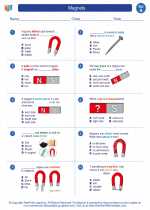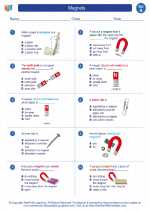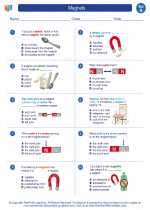Temporary Magnets
Temporary magnets are materials that act like permanent magnets when they are within a strong magnetic field but do not retain their magnetism once the magnetic field is removed. Temporary magnets are often used in applications where magnetism is required temporarily, such as in electromagnets and magnetic storage devices.
How do Temporary Magnets Work?
Temporary magnets work by aligning their magnetic domains in the presence of a strong external magnetic field. This alignment creates a net magnetic field within the material, causing it to behave like a magnet. However, once the external magnetic field is removed, the magnetic domains within the material go back to their original random orientations, resulting in the loss of magnetism.
Examples of Temporary Magnets
Some common examples of temporary magnets include iron, steel, and nickel. When these materials are exposed to a strong magnetic field, they become magnetized and can attract other magnetic materials. However, they lose their magnetism once the external magnetic field is removed.
Applications of Temporary Magnets
Temporary magnets are widely used in various applications, including:
- Electromagnets: Temporary magnets are used to create electromagnets, which are essential in devices such as electric motors, generators, and magnetic resonance imaging (MRI) machines.
- Magnetic Storage: Temporary magnets are used in magnetic storage devices such as hard disk drives and magnetic tapes, where data is stored using magnetized particles on a temporary magnetic medium.
- Magnetic Separation: Temporary magnets are used to separate magnetic materials from non-magnetic materials in processes such as recycling and ore extraction.
Study Guide
Here are some key points to remember about temporary magnets:
- Temporary magnets only exhibit magnetism when they are within a strong external magnetic field.
- Materials such as iron, steel, and nickel are examples of temporary magnets.
- Temporary magnets are commonly used in electromagnets, magnetic storage devices, and magnetic separation processes.
- They lose their magnetism once the external magnetic field is removed.
Remember to review these key points and examples to solidify your understanding of temporary magnets.
.◂Science Worksheets and Study Guides First Grade. Magnets

 Worksheet/Answer key
Worksheet/Answer key
 Worksheet/Answer key
Worksheet/Answer key
 Worksheet/Answer key
Worksheet/Answer key
 Vocabulary/Answer key
Vocabulary/Answer key
